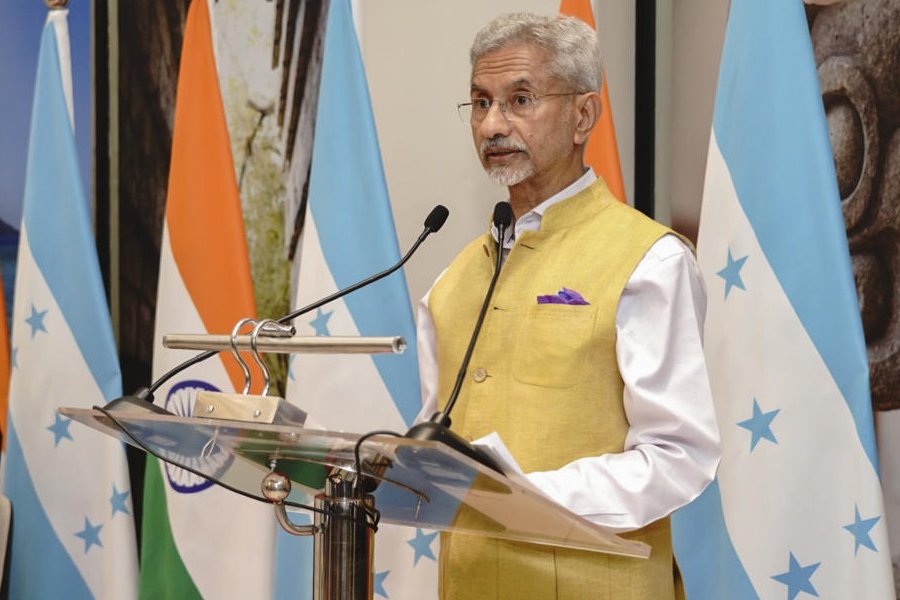
A team from Salt Lake's Variable Energy Cyclotron Centre (VECC) is among the scientists looking into the next big discovery after the Higgs boson, a possible explanation of the creation of universe by analysing the matter that was created microseconds after the Big Bang.
The second phase of the Large Hadron Collider (Run-2) started at CERN in Geneva at 10.10am, around lunchtime in Calcutta, on Wednesday.
And it has created a record in energy collision producing 13 teraelectronvolts (TeV) energy, the highest energy so far in a proton-proton (PP) collision in a laboratory.
Scientists from VECC, led by Tapan Nayak, were at CERN to witness the start of the LHC's second run.
"With such high energy, one can expect a new particle to be discovered, the super-symmetry particles for example, which will be the possible candidates for dark matter," said Premomoy Ghosh of VECC.
After the discovery of Higgs boson in May 2012, the next big question that scientists sought to answer is what is dark matter that comprises almost 27 per cent of the universe.
Apart from dark matter, scientists are also looking to explain the formation of universe from the Big Bang and consequently study the state of matter that existed right after the Big Bang.
ALICE (A Large Ion Collider Experiment) is dedicated to the search and study of Quark Gluon Plasma (QGP), a hot and dense matter that existed right after the Bang.
"We are creating little bangs in the laboratory by heavy ion collision," said Ghosh, who is part of the ALICE-India collaboration, along with Nayak and other scientists at VECC. "Reaching this new high energy collision has another dimension. It has led to the creation of matter that has features resembling QGP.
"The other acceptable explanation to these new features is provided by a model based on Colour Glass Condensate (CGC) that envisages another new form of exotic matter. The data collected in the second run of the LHC is likely to settle whether it is QGP or CGC. Whatever it is, there will certainly be a discovery."
Ghosh is also part of the task force especially formed to look into the high multiplicity collisions data. Not just him, Nayak, along with students Sanjib Muhuri and Maitreyee Mukherjee, under the guidance and leadership of VECC director Dinesh Srivastava, are working in this panel.
Nayak, Muhuri and Mukherjee were present at CERN on Wednesday for the smooth startup of the Photon Multiplicity Detector (PMD). VECC scientists and engineers have fully developed, shipped, installed and maintained the PMD at CERN.
"The PMD has been taking data ever since the LHC started today (Wednesday). It has been an amazing experience at the ALICE control room today," said Ghosh.
"After nearly two years of maintenance and repair, as well as several months of re-commissioning, the experiment at the world's largest particle accelerator is now ready to take data at the unprecedented energy of 13 TeV - almost double the collision energy of the LHC's first three-year run. Data taking will mark the start of season 2 at the LHC, opening the way to new frontiers in physics," read CERN's live blog on Wednesday.










